Year 4
The science inquiry skills and science as a human endeavour strands are described across a two-year band. In their planning, schools and teachers refer to the expectations outlined in the achievement standard and also to the content of the science understanding strand for the relevant year level to ensure that these two strands are addressed over the two-year period. The three strands of the curriculum are interrelated and their content is taught in an integrated way. The order and detail in which the content descriptions are organised into teaching and learning programs are decisions to be made by the teacher.
Incorporating the key ideas of science
Over Years 3 to 6, students develop their understanding of a range of systems operating at different time and geographic scales.
In Year 4, students broaden their understanding of classification and form and function through an exploration of the properties of natural and processed materials. They learn that forces include non-contact forces and begin to appreciate that some interactions result from phenomena that can't be seen with the naked eye. They begin to appreciate that current systems, such as Earth's surface, have characteristics that have resulted from past changes and that living things form part of systems. They understand that some systems change in predictable ways, such as through cycles. They apply their knowledge to make predictions based on interactions within systems, including those involving the actions of humans.
(source: www.australiancurriculum.edu.au)
Achievement Standard
By the end of Year 4, students apply the observable properties of materials to explain how objects and materials can be used. They describe how contact and non-contact forces affect interactions between objects. They discuss how natural processes and human activity cause changes to Earth’s surface. They describe relationships that assist the survival of living things and sequence key stages in the life cycle of a plant or animal. They identify when science is used to understand the effect of their actions.
Students follow instructions to identify investigable questions about familiar contexts and make predictions based on prior knowledge. They describe ways to conduct investigations and safely use equipment to make and record observations with accuracy. They use provided tables and column graphs to organise data and identify patterns. Students suggest explanations for observations and compare their findings with their predictions. They suggest reasons why a test was fair or not. They use formal and informal ways to communicate their observations and findings.
(source: www.australiancurriculum.edu.au)
- Plus Plan
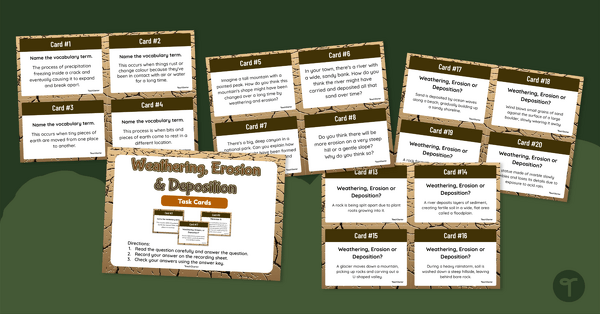
Slow Changes to Earth's Surface Task Cards
Guide your students to answer vocabulary and situational questions about weathering, erosion and deposition with this set of 24 task cards.
- Plus Plan
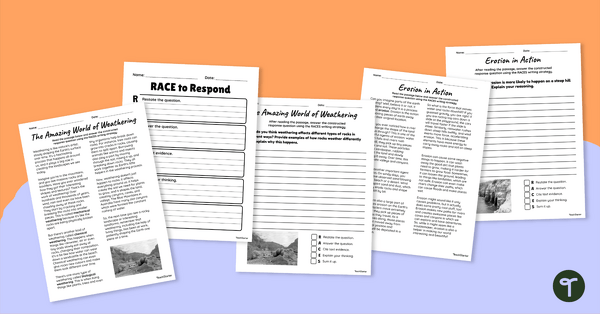
Weathering and Erosion – RACES Writing Strategy Worksheets
Combine reading, writing and science with two worksheets about weathering and erosion using the RACES writing strategy for text evidence.
- Plus Plan
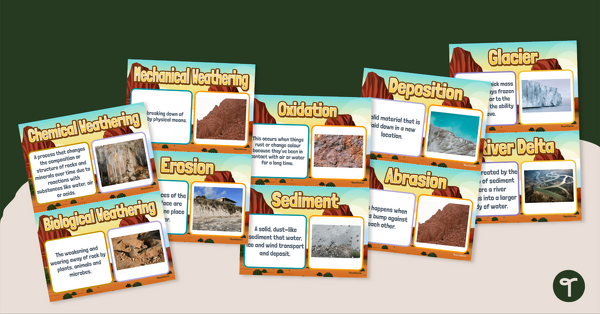
Weathering, Erosion and Deposition Vocabulary Posters
Display this set of science vocabulary posters in your classroom when teaching about weathering, erosion and deposition.
- Plus Plan

Weathering, Erosion and Deposition Matching Game
Challenge your students to identify different slow changes to Earth’s surface with this matching game designed for year 4 and 5 students.
- Plus Plan
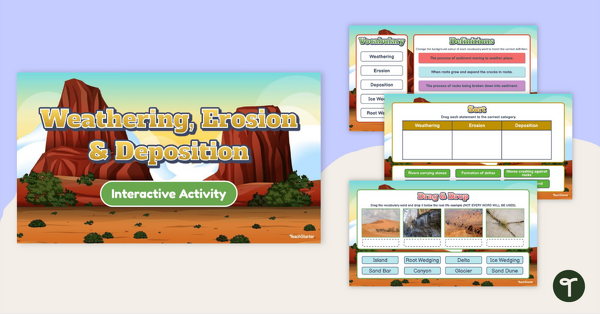
Weathering, Erosion & Deposition Interactive Activity
Use this set of interactive activities to strengthen student understanding of weathering, erosion and deposition concepts.
- Plus Plan
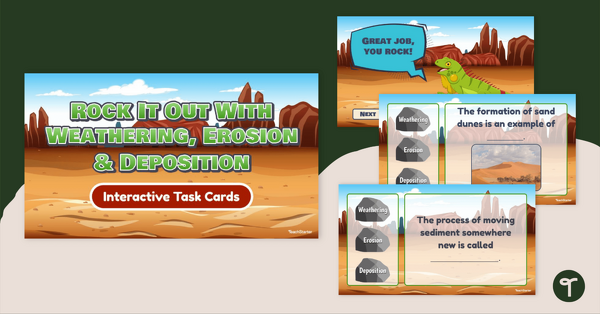
Rock It Out With Weathering, Erosion and Deposition – Interactive Task Cards
Dive into the fascinating world of Earth’s transformations! Download this set of interactive task cards to review weathering, erosion and deposition concepts with your students.
- Plus Plan
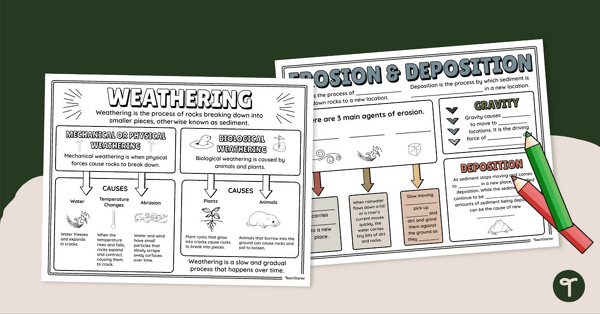
Weathering, Erosion and Deposition Doodle Notes
Engage your students with a set of science doodle notes when learning about erosion, weathering and deposition.
- Plus Plan
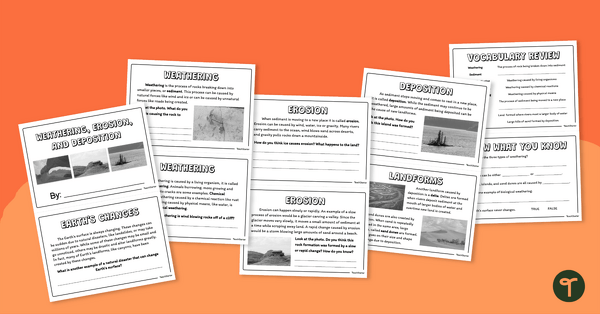
Weathering, Erosion and Deposition Mini-Book
Introduce your students to the different slow changes to Earth’s surface with a printable mini-book designed for year 4 and 5 students.
- Plus Plan
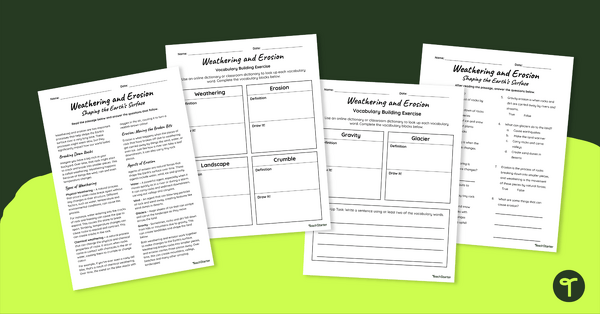
Weathering vs. Erosion Worksheet Pack
Support student understanding of weathering and erosion with this reading comprehension passage, worksheet and accompanying vocabulary activities.
- Plus Plan
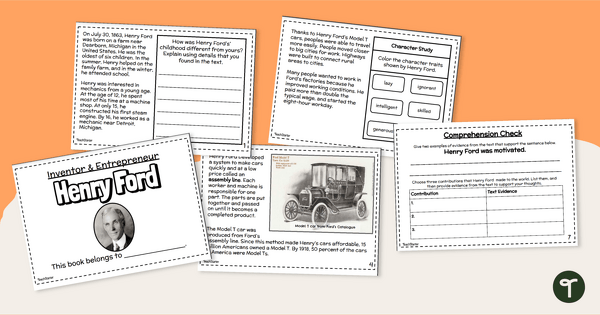
Henry Ford Mini Book - Famous Inventor Activity Book
Provide students with cross-curricular history, science and reading instruction with a printable Henry Ford mini book.
- Plus Plan
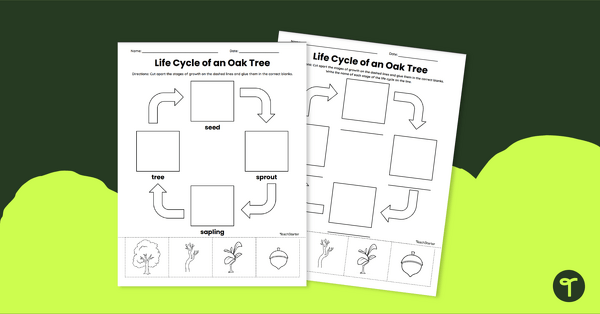
Life Cycle of an Oak Tree Worksheet
Sequence the life cycle of an oak tree with this cut-and-paste worksheet.
- Plus Plan
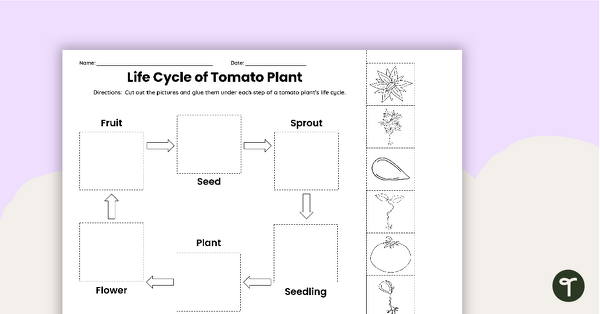
Tomato Plant Life Cycle - Cut and Paste Worksheet
Learn about the life cycle of a tomato with a cut-and-paste sequencing worksheet.
- Plus Plan
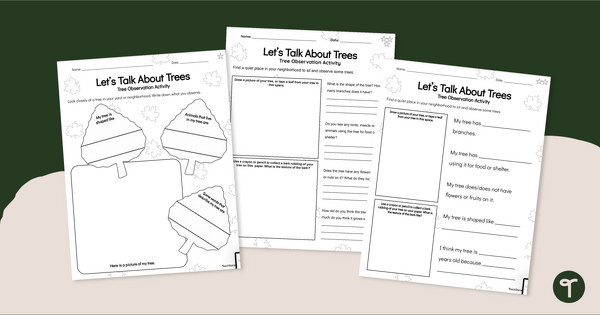
Tree Observation Worksheets
Record observations of trees in the local environment with a printable graphic organiser.
- Plus Plan
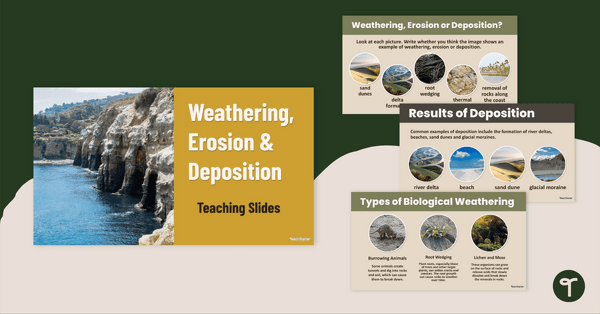
Weathering, Erosion and Deposition – Teaching Slides
Learn about the different types of weathering, effects of erosion, results of deposition and more with this set of teaching slides.
- Plus Plan
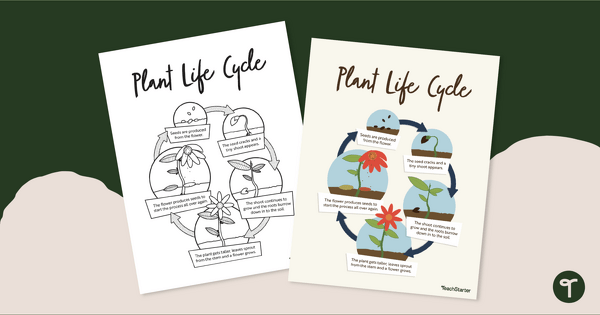
Plant Life Cycle Anchor Chart
Display and discuss the life cycle of a flower with a printable anchor chart.
- Plus Plan
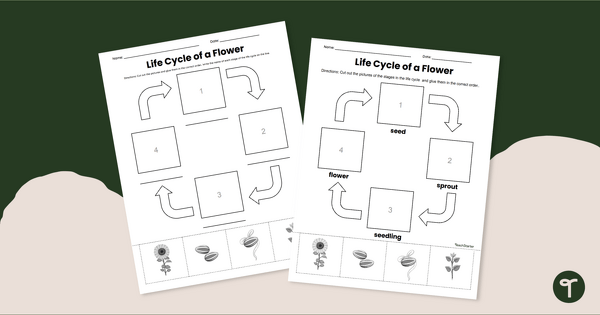
Life Cycle of a Flower Worksheet
Model the stages in the flower life cycle with a cut-and-paste worksheet.
- Plus Plan
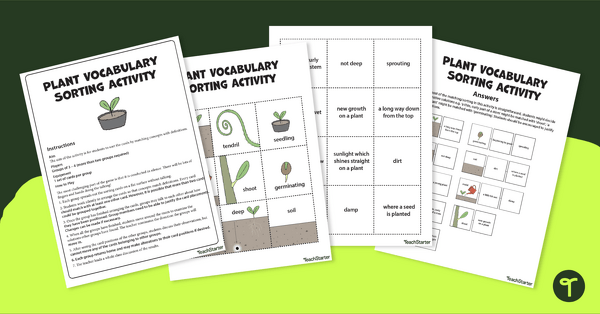
Plant Vocabulary Words - Sorting Activity
Help students become familiar with vocabulary related to plants with a hands-on matching activity.
- Plus Plan

Lab Safety Teaching Slides
Teach the important of science safety before conducting experiments with this 18-slide Lab Safety PowerPoint.
- Plus Plan
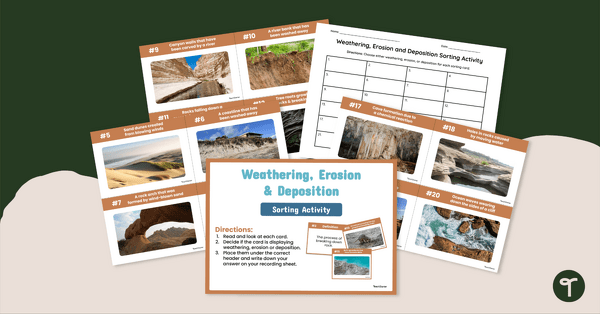
Weathering, Erosion and Deposition – Sorting Activity
Categorise examples of deposition, weathering and erosion with this 24-card sorting activity.
- Free Plan
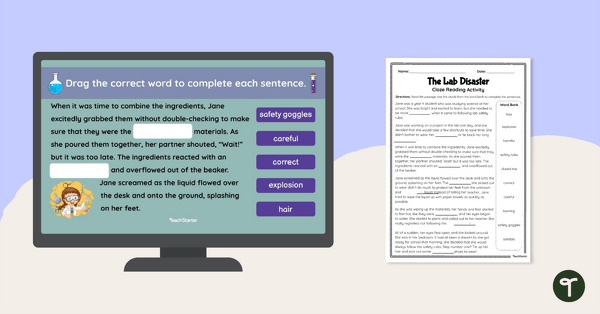
Lab Safety Interactive and Printable Cloze Reading Activity
Assess students' understanding of lab safety rules and expectations with this cloze reading activity.
- Plus Plan
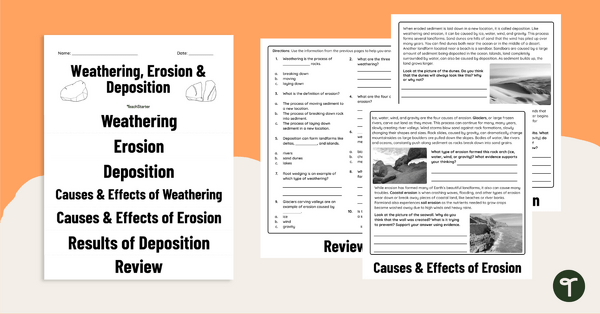
Weathering, Erosion and Deposition Flipbook
Learn about the causes and effects of weathering, erosion and deposition with a printable flipbook.
- Plus Plan
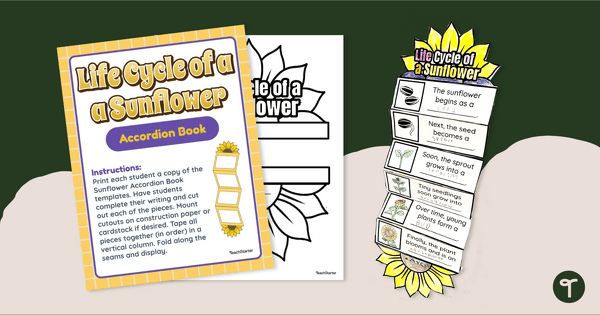
Life Cycle of a Sunflower Accordion Book
Get crafty and teach your students the stages in the life cycle of a sunflower with a fun accordion book science craft.
- Plus Plan

Weathering and Erosion Word Wall Vocabulary
Expand your students' science vocabulary with a weathering and erosion word wall.
- Plus Plan
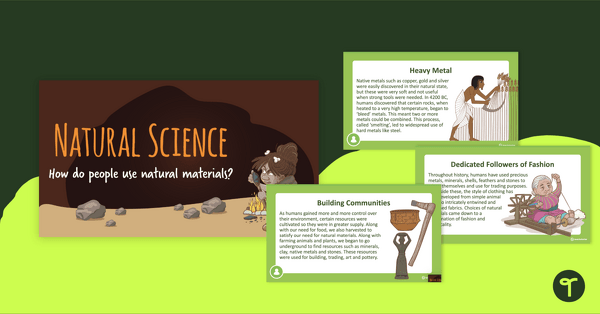
Natural Science PowerPoint - How Do People Use Natural Resources?
A teaching presentation discussing natural resources and how humans interact with them.
- Plus Plan
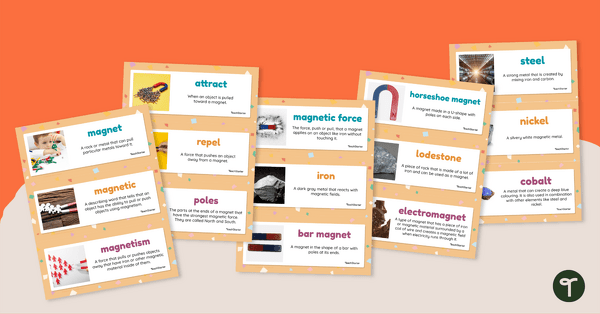
Magnetism Vocabulary Cards
Reinforce science vocabulary in your classroom with this set of word wall cards that focus on magnetism.
- Plus Plan
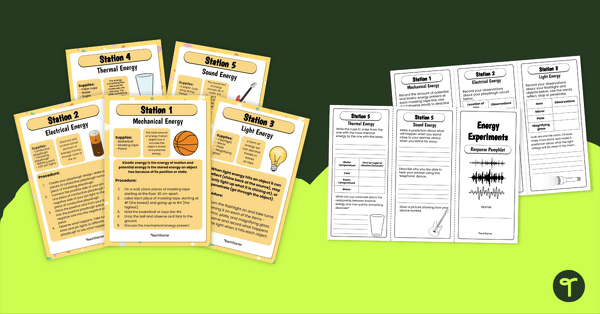
Forms of Energy – Year 4 Science Experiments for Kids
Investigate mechanical, electrical, light, thermal and sound energy with this set of science activities for kids.
- Plus Plan
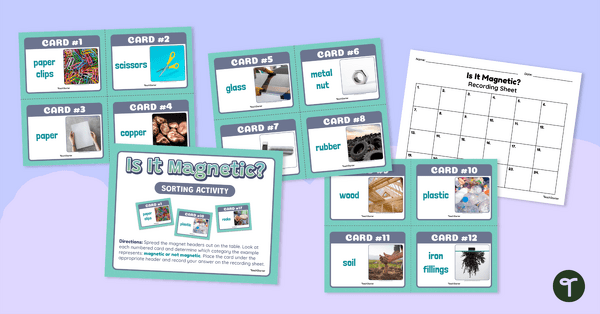
Is It Magnetic? Sorting Activity
Use this sorting activity when classifying objects as magnetic or not magnetic.
- Plus Plan
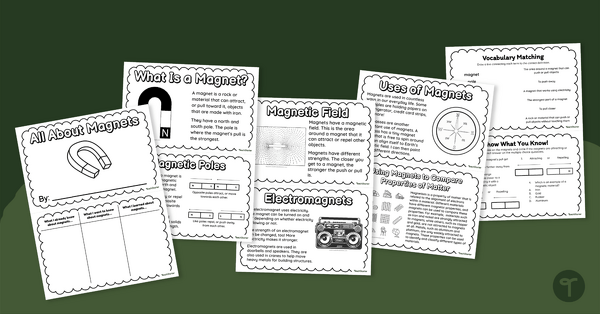
All About Magnets Mini-Book
Learn about magnets, magnetic poles, magnetic fields and more with this printable mini-book.
- Plus Plan
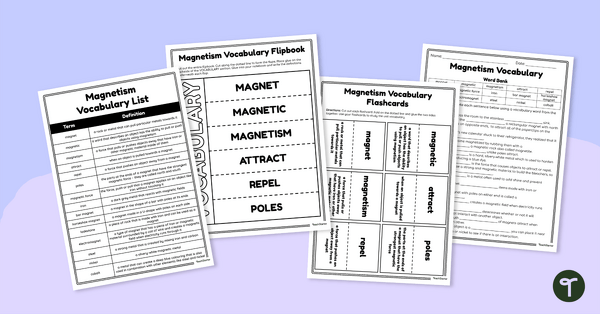
Magnetism – Science Vocabulary Worksheets
Review terms associated with magnetism with this science vocabulary worksheet pack.
- Free Plan

Magnets Word Wall Vocabulary
Expand your students' science vocabulary with printable Magnets word wall vocabulary cards.
- Plus Plan
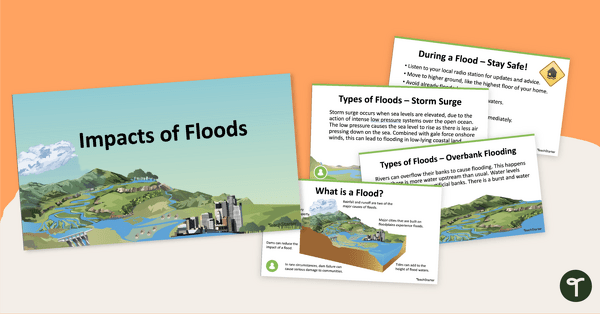
Impacts of Floods PowerPoint
A 17-slide editable PowerPoint template about floods and their impact on communities.
- Free Plan
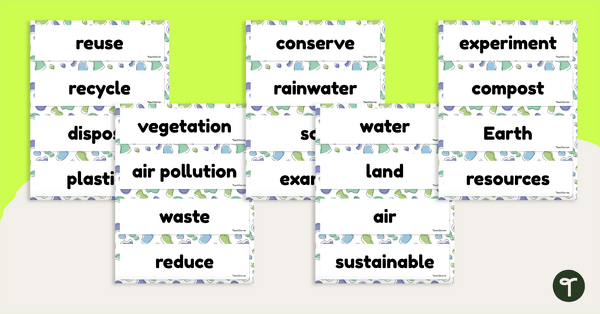
Save Planet Earth - Science Word Wall Vocabulary
Print and display Earth Day-related terms in your classroom to improve vocabulary and discussion about Earth Day.